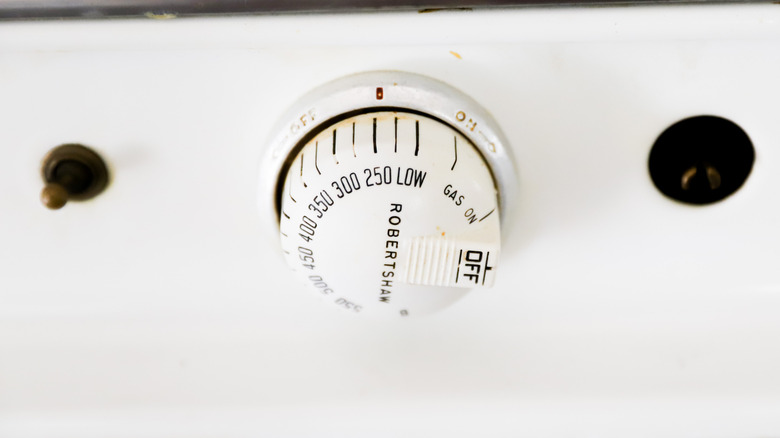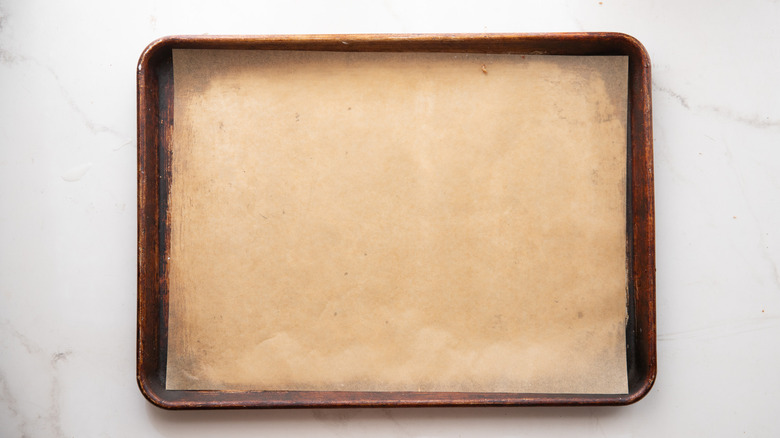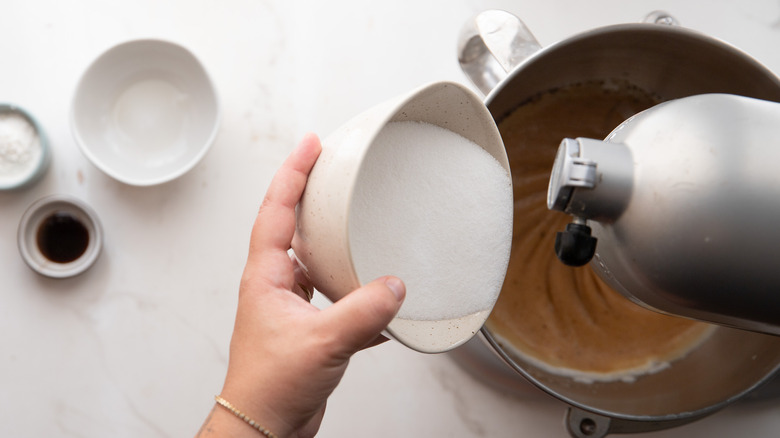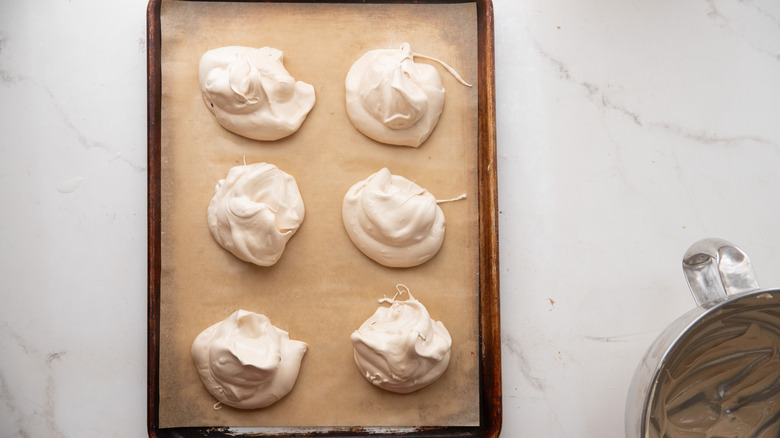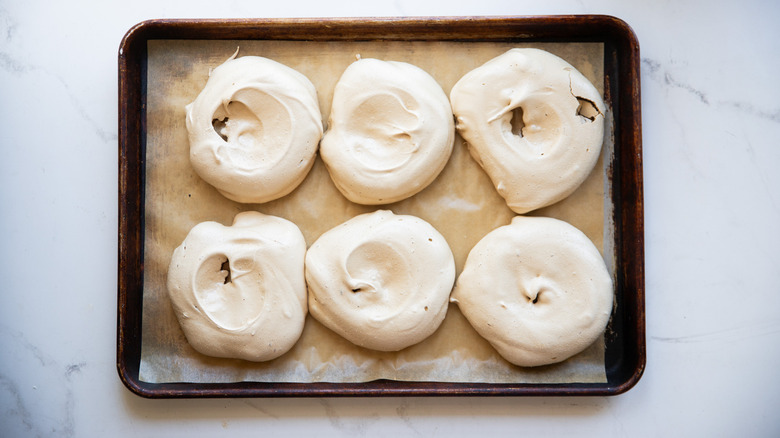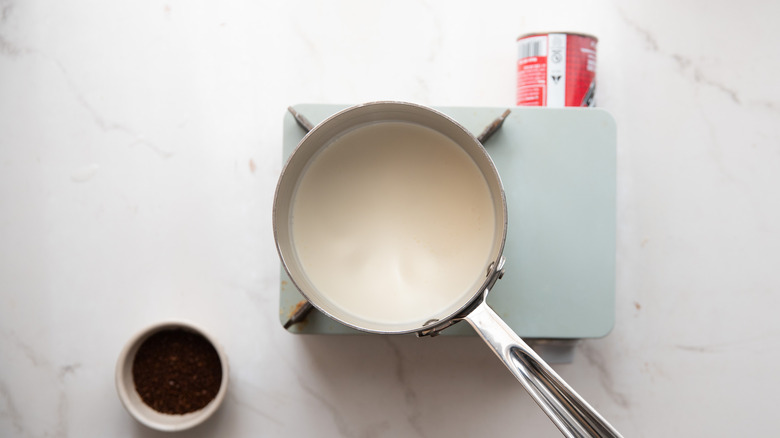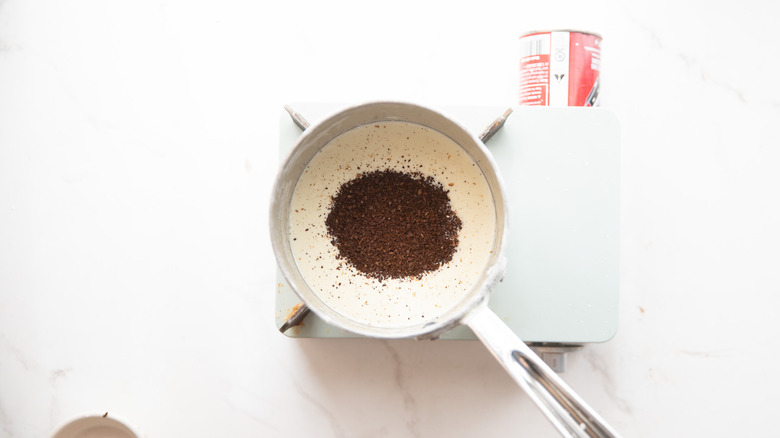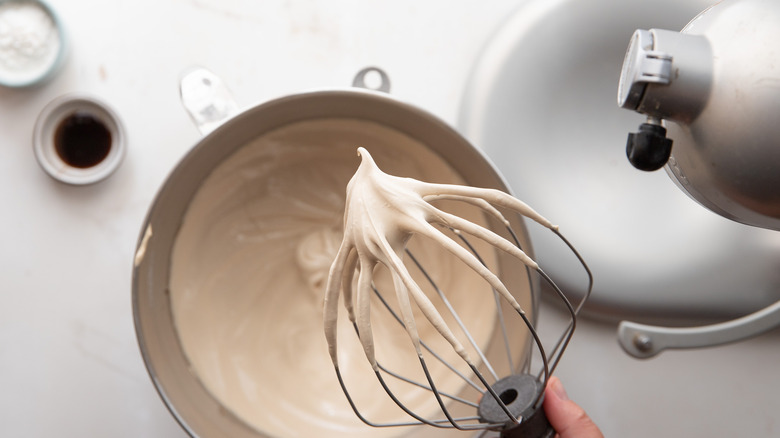Coffee Coffee Mini Pavlovas Recipe
Pavlova is a delicate and airy dessert that was invented in Australia and named after a Russian ballerina. This gluten-free dessert is typically made with a base of baked meringue, which is removed from the oven when crispy on the outside but still chewy and soft in the center, and then topped with fruit and whipped cream. It's the perfect combination of textures, and a perfect canvas to play with a wide range of flavor combinations. As the dessert has become a worldwide favorite, dozens of variations have entered the scene, from rich chocolate creations to tart tropical fruit versions.
Because the meringue in a pavlova is necessarily sweet, an ideal pairing to all that sugar is the bitter richness of coffee. In this recipe, espresso powder is infused into the meringue itself, while the whipped cream is first simmered with ground coffee. This double-coffee creation is enhanced with a generous spoonful of salted caramel, giving the dessert the overall flavor profile of a rich caramel macchiato. Recipe developer Taylor Murray walks us through her delicate dessert.
Gather the ingredients for coffee coffee mini pavlovas
Whether you're making large or small pavlova, a necessary ingredient is egg whites. The whites get whipped with sugar and vanilla bean paste until airy and light, then folded together with cornstarch, a dash of vinegar, and a pinch of salt. The last few ingredients can barely be tasted but improve the texture of the pavlova. Beaten into the whites is a touch of espresso powder to give it a subtle flavor of bitter coffee, which helps offset the sweetness.
Coffee is a natural friend to caramel, which we pool into the center of the baked meringue. We opted to use a store-bought version, though you could absolutely make your own. A pile of coffee-infused whipped cream rests on top of the caramel, optionally dusted with just a touch of cocoa powder to create a lovely color contrast.
Step 1: Heat the oven
Preheat the oven to 250 F.
Step 2: Prepare a sheet tray
Line a baking sheet with parchment paper.
Step 3: Combine the egg whites and salt
In a stand mixer fitted with the whisk attachment, combine the egg whites and salt.
Step 4: Beat the whites
Beat the whites until foamy, about 1 minute.
Step 5: Add espresso powder
With the mixer running, add the espresso powder.
Step 6: Slowly add sugar
Slowly add the sugar and beat until firm with stiff, shiny peaks, about 3 more minutes.
Step 7: Add the remaining ingredients
Sift the cornstarch onto the egg whites and fold it in with the vinegar and vanilla.
Step 8: Dollop the meringue on the tray
Divide the meringue into 6 large mounds on a baking sheet.
Step 9: Create divots in the meringue
Use the back of the spoon to create a small well in the middle of each glob.
Step 10: Bake the pavlova
Bake the pavlovas until they're hard on the exterior but still soft on the inside, about 1 ½ hours. Turn off the oven and leave the pavlovas in until cool, about 2 more hours, or overnight.
Step 11: Simmer the cream
Meanwhile, heat half the cream to a simmer.
Step 12: Add the coffee
Add the ground coffee and remove from heat.
Step 13: Steep the cream
Let steep for 20 minutes then strain and chill.
Step 14: Whip the cream
Whip the infused cream with the remaining cream until soft peaks form, about 5 minutes.
Step 15: Spoon caramel on the pavlova
When ready to serve, spoon 2 to 3 tablespoons of caramel sauce into the well of each pavlova.
Step 16: Top with whipped cream
Pipe or spoon the whipped coffee cream over the caramel.
Step 17: Finish with cocoa powder
If desired, dust cocoa powder over the top of the cream.
Coffee Coffee Mini Pavlovas Recipe
Espresso powder-infused meringue is piled with coffee-flavored whipped cream and topped with salted caramel, in a pavlova that's like a rich caramel macchiato.
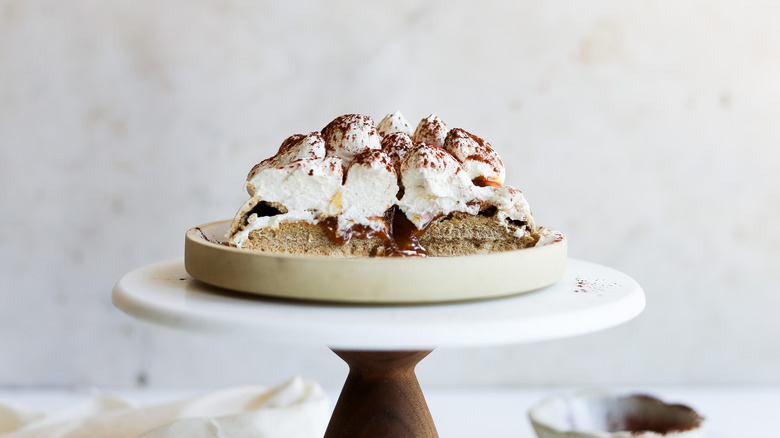
Ingredients
- 6 large egg whites, room temperature
- Pinch kosher salt
- 3 teaspoons espresso powder
- 1 ¼ cup granulated sugar
- 2 tablespoons cornstarch
- 1 teaspoon white vinegar
- 1 teaspoon vanilla bean paste
- 2 cups heavy cream
- ½ cup ground coffee
- 1 cup caramel sauce
- Optional ingredients:
- 3 tablespoons dark cocoa powder
Directions
- Preheat the oven to 250 F.
- Line a baking sheet with parchment paper.
- In a stand mixer fitted with the whisk attachment, combine the egg whites and salt.
- Beat the whites until foamy, about 1 minute.
- With the mixer running, add the espresso powder.
- Slowly add the sugar and beat until firm with stiff, shiny peaks, about 3 more minutes.
- Sift the cornstarch onto the egg whites and fold it in with the vinegar and vanilla.
- Divide the meringue into 6 large mounds on a baking sheet.
- Use the back of the spoon to create a small well in the middle of each glob.
- Bake the pavlovas until they're hard on the exterior but still soft on the inside, about 1 ½ hours. Turn off the oven and leave the pavlovas in until cool, about 2 more hours, or overnight.
- Meanwhile, heat half the cream to a simmer.
- Add the ground coffee and remove from heat.
- Let steep for 20 minutes then strain and chill.
- Whip the infused cream with the remaining cream until soft peaks form, about 5 minutes.
- When ready to serve, spoon 2 to 3 tablespoons of caramel sauce into the well of each pavlova.
- Pipe or spoon the whipped coffee cream over the caramel.
- If desired, dust cocoa powder over the top of the cream.
Nutrition
| Calories per Serving | 599 |
| Total Fat | 29.1 g |
| Saturated Fat | 18.5 g |
| Trans Fat | 1.0 g |
| Cholesterol | 89.6 mg |
| Total Carbohydrates | 82.6 g |
| Dietary Fiber | 1.1 g |
| Total Sugars | 75.4 g |
| Sodium | 320.9 mg |
| Protein | 7.7 g |
How do you store pavlova?
To store pavlova the best way to maintain its unique texture and flavor, first make sure that once you bake the pavlova you allow it to cool completely. Any residual heat will result in unwanted weeping or softness. Leave off the toppings that finish the baked meringue until just before serving and store the meringues in a dry, airtight container at room temperature for up to 4 days.
In a separate container, store the whipped cream and caramel so you can put the dessert together quickly. If you are going to wait more than about 24 hours, wait to whip the cream until just before serving. In the case that the pavlova has already been topped with caramel and whipped cream, your best bet is to eat it right away. Once the moisture in the cream and caramel touches the meringue, it starts to break down the crisp texture and causes it to soften. The flavors will still be delicious, but the texture will be a bit flat and chewy.
What is the secret to airy meringue?
In order to get pillowy, airy, and light-as-air pavlova, you have to master the art of the egg white meringue. There are tons of pitfalls and mistakes you can make with meringue, despite the simplicity of the technique. For the best results, make sure to follow a few key steps. First, your egg whites must be at room temperature. The temperature allows the whites to hold more air, leading to a fluffier meringue.
Also, a small amount of acid like cream of tartar or vinegar (as is the case in this recipe) helps to stabilize the meringue and prevents the tiny microbubbles from popping. Your equipment should be completely dry and clean, with no spots of old grease or butter residue from previous projects. While it can be tempting, avoid over-mixing, which can knock the air out of your meringue after it has already reached its highest possible volume. Once the mixture is prepared, work quickly and with a light touch to transfer it to the baking sheet and form the pavlova.


